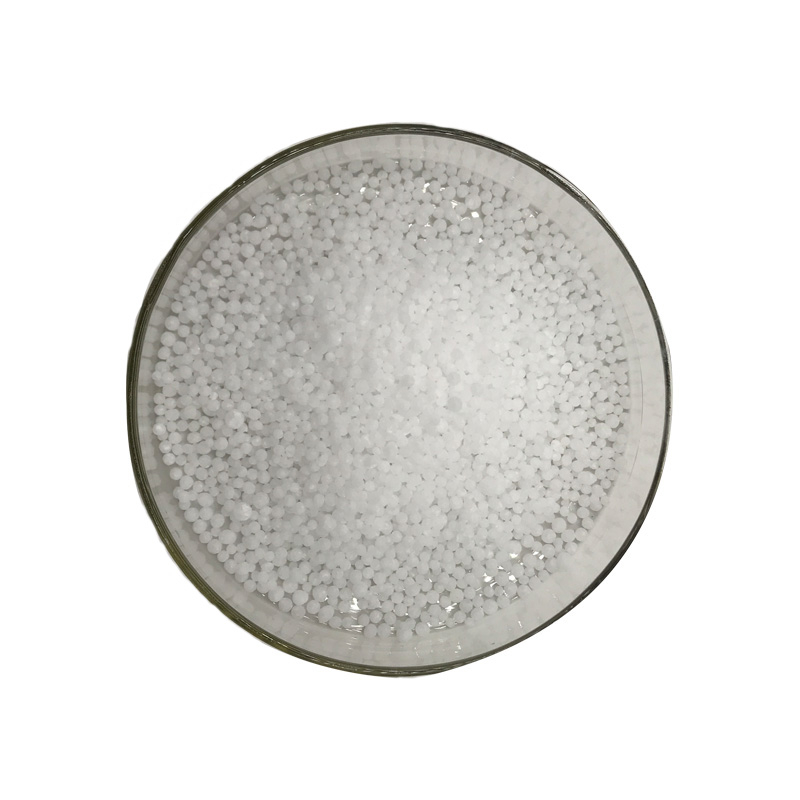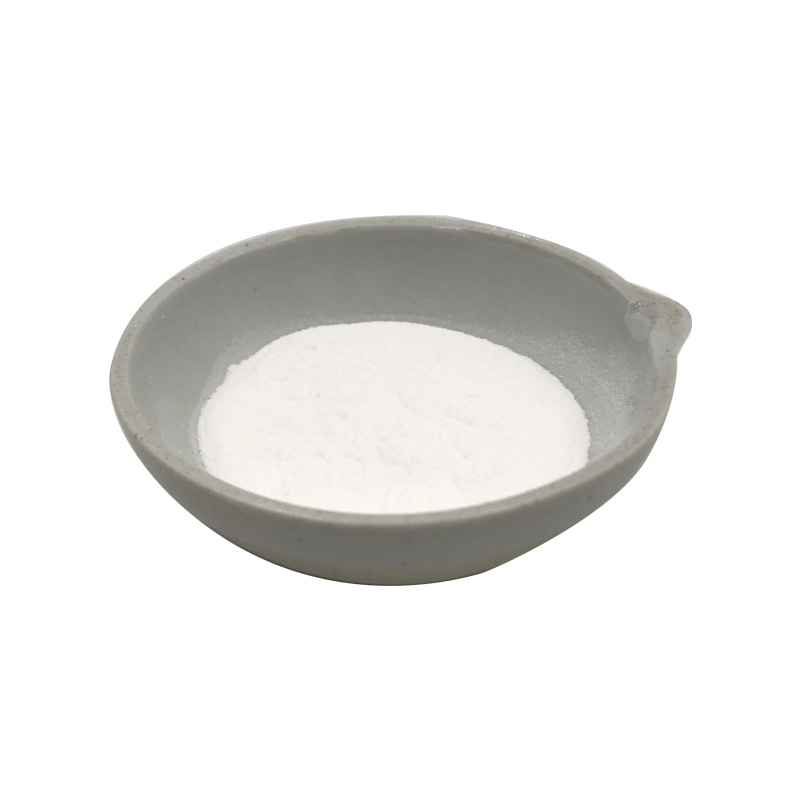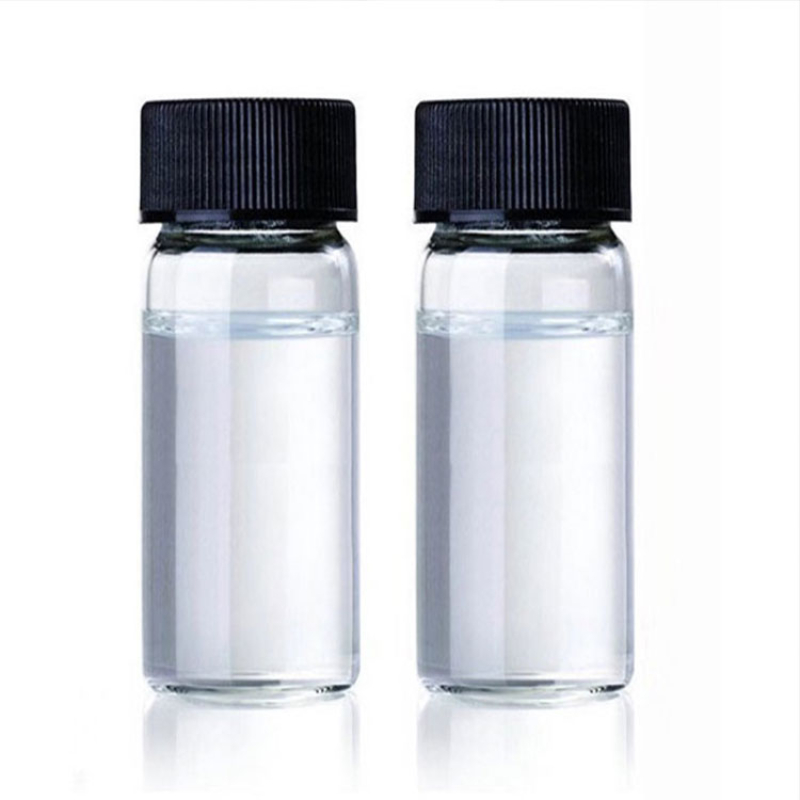Urea CAS#57-13-6The urea molecule is planar in the crystal structure, but the geometry around the nitrogens is pyramidal in the gas-phase minimum-energy structure. In solid urea, the oxygen center is engaged in two N-H-O hydrogen bonds. The resulting dense and energetically favourable hydrogen-bond network is probably established at the cost of efficient molecular packing: The structure is quite open, the ribbons forming tunnels with square cross-section.
Contact Now
Products Description of Urea CAS#57-13-6When the temperature is below 20℃ and the relative humidity is below 70%, urea not only does not absorb moisture, but also evaporates water to reduce its water content; when the temperature exceeds 20℃ and the relative humidity is higher than 80%, it begins to absorb moisture, and in severe cases, it becomes a paste. When the air turns dry again, it will re-agglomerate, and its degree is second only to ammonium nitrate.
Contact Now
Products Description of Imidazolidinyl urea CAS#39236-46-9White flowing powder, hygroscopic, odorless or with a slight characteristic odor, easily soluble in water, soluble in propylene glycol and glycerin, and hardly soluble in ethanol.Imidazolidinyl urea Chemical PropertiesMelting point 141-143℃Boiling point 514.04°C (rough estimate)density 1.4245 (rough estimate)vapor pressure 0Pa at 25℃refractive index 1.6910 (estimate)storage temp. 2-8°Csolubility Soluble in water and in glycerol, but insoluble in almost all organic solvents.pka7.41±0.10(Predicted)f
Contact Now
Products Description of Triethylenediamine CAS#280-57-9Triethylenediamine, also known as 1,4-diazabicyclo〔2.2.2〕octane, or triethylenediamine, abbreviated as DABCO or TEDA in English, has a chemical formula of C6H12N2.
Contact Now
Products Description of SILICA CAS#10279-57-9Used as filler for paints and coatings, rubber reinforcing agent, plastic tackifier and thixotropic agent, thickener for synthetic grease and silicone greaseSILICA Chemical PropertiesMelting point 1610 °C(lit.)Boiling point >100 °C(lit.)density 2.6 g/mL at 25 °C(lit.)refractive index n20/D 1.544(lit.)storage temp. no restrictions.form tablets (~0.5 g each)Water Solubility Insoluble in water.Exposure limitsNIOSH: IDLH 3000 mg/m3; TWA 6 mg/m3EPA Substance Registry SystemSilica, h
Contact Now
Products Description of Methylcyclopentadienyl manganese tricarbonyl CAS#12108-13-3Methylcyclopentadienyl manganese tricarbonyl, a metallic manganese compound. Combustible, highly toxic, decomposes into toxic manganese oxide fumes in fires.
Contact Now
Products Description of Allylbenzene CAS#300-57-2Allylbenzene is an organic compound, a colorless liquid. Melting point -40℃, boiling point 156℃, flash point 33℃, relative density (20/4℃) 0.8920, refractive index 1.5131.
Contact Now
Products Description of 6-CHLOROQUINOLINE CAS#612-57-76-Chloroquinoline is a white powdery chemical.CAS No.
Contact Now
Products Description of Bretazenil CAS#84379-13-5Brotacetin is a partial agonist of the GABAA receptor of the benzodiazepine class. It was first developed by Roche as an antianxiety drug. Studies have found that brotacetin can counteract the spasms caused by pentamethazine. At an antispasmodic dose (125-250 μg·kg-1), brotacetin combined with pyridostigmine (100 μg·kg-1, im) and aprofen (4 mg·kg-1, im) can prevent sarin and soman poisoning. Brotacetin has good antianxiety activity at a dose of 50-400 μg·kg-1. Compared with diazepam, it has little adverse reaction of myasthenia.
Contact Now
Products Description of 2,5-Dimethyl-2,4-Hexadiene CAS#764-13-62,5-Dimethyl-2,4-hexadiene is a chemical,Insoluble in water, soluble in alcohol and ether.2,5-Dimethyl-2,4-hexadiene Chemical PropertiesMelting point 12 °CBoiling point 132134°Cdensity 0.773 g/mL at 25 °C(lit.)vapor density 3.8 (vs air)vapor pressure 26.9 mm Hg ( 37.7 °C)refractive index n20/D 1.476(lit.)Fp 85 °Fstorage temp. Flammables areasolubility Chloroform, Ethyl Acetateform Oilcolor Clear ColourlessBRN 1733342LogP3.500CAS DataBase Refer
Contact Now
Products Description of 6-Bromo-2,3-dihydro-4H-chromen-4-one CAS#49660-57-34-Dihydrochromone is a class of natural compounds with excellent biological activity.
Contact Now
Products Description of Poly(methylhydrosiloxane) CAS#63148-57-2Polymethylhydrogensiloxane is a silicone oil used in biology and chemistry. Under the action of metal salt catalysts, it can cross-link into a film at low temperature, forming a waterproof film on the surface of various materials.
Contact Now
Products Description of L-Threonic acid magnesium salt CAS#778571-57-6Magnesium L-threonate (MgT, pronounced "Mag T") is a chemical substance discovered by Professor Liu Guosong and a team from Tsinghua University and MIT.L-Threonic acid magnesium salt Chemical Propertiesstorage temp. Inert atmosphere,Room TemperatureInChIInChI=1S/2C4H8O5.Mg/c2*5-1-2(6)3(7)4(8)9;/h2*2-3,5-7H,1H2,(H,8,9);/q;;+2/p-2InChIKeyYVJOHOWNFPQSPP-UHFFFAOYSA-LSMILESC(C1=O[Mg+2]2(O=C(C(O)C(O)CO)[O-]2)[O-]1)(O)C(O)COProduct Application of L-Threonic acid magnesium salt CAS#778571-57-6Magnesium, as a
Contact Now
Products Description of Diethyl Ethoxymethylenemalonate CAS#87-13-8Ethoxymethylene, also known as diethyl ethoxymethylenemalonate, is a colorless, transparent and viscous liquid. It is an important pharmaceutical intermediate and is widely used in the synthesis of medicines, pesticides and auxiliaries.
Contact Now
Products Description of Pyridine hydrochloride CAS#628-13-7Pyridine, an organic compound, is a six-membered heterocyclic compound containing a nitrogen atom. It can be regarded as a compound in which one (CH) in the benzene molecule is replaced by N, so it is also called nitrogen benzene. It is a colorless or slightly yellow liquid with a foul odor. Pyridine and its homologues exist in bone tar, coal tar, coal gas, shale oil, and petroleum.
Contact Now
Products Description of Chlorobutanol CAS#57-15-8Colorless crystals. There are two types of crystals: containing half molecular crystal water and anhydrous. The melting point of the containing half molecular crystal water type is 78℃, slightly soluble in water (1:250), easily soluble in ethanol (1:1), glycerol (1:10), ether, chloroform and volatile oil. The melting point of the anhydrous type is 97℃, the boiling point is 167℃, and the 135℃ (32.7kPa).
Contact Now
Products Description of Sulfanilic acid CAS#121-57-3White or off-white crystal. Hydrates lose water at 100°C, and anhydrous substances begin to decompose and carbonize at 280°C. Relative density 1.485 (25/4).
Contact Now
Products Description of Hexadecyl trimethyl ammonium bromide CAS#57-09-0Hexadecyltrimethylammonium bromide is white or light yellow crystals or powder, easily soluble in isopropanol, soluble in water, produces a lot of foam when shaken, and has good compatibility with cationic, nonionic, and amphoteric surfactants. It has excellent penetration, softening, emulsification, antistatic, biodegradability, and bactericidal properties.
Contact Now
Acrylonitrile CAS#107-13-1 Acrylonitrile is a colourless, flammable liquid. Its vapours might also explode when uncovered to an open flame. Acrylonitrile does now not take place naturally. It is produced in very giant quantities through numerous chemical industries in the United States, and its requirement and demand are growing in latest years. Acrylonitrile is a closely produced, unsaturated nitrile.
Contact Now
Products Description of Allylbenzene CAS#300-57-2Allylbenzene is an organic compound with a molecular formula of C9H10 and a molecular weight of 118.18. It is a colorless liquid. Soluble in ethanol, ether, benzene, insoluble in water.
Contact Now
Products Description of Hexadecyl trimethyl ammonium bromide CAS#57-09-0Hexadecyltrimethylammonium bromide is white or light yellow crystals or powder, easily soluble in isopropanol, soluble in water, produces a lot of foam when shaken, and has good compatibility with cationic, nonionic, and amphoteric surfactants. It has excellent penetration, softening, emulsification, antistatic, biodegradability, and bactericidal properties.
Contact Now
Products Description of 2-Chlorophenol CAS#95-57-8 o-Chlorophenol is a colorless to yellow-brown liquid, m.p.8.7℃, b.p.175℃, n25D 1.5565, relative density 1.265.
Contact Now
Products Description of Tris(2-methyl-1-aziridinyl)phosphine oxideCAS#57-39-6It is mainly used as a crosslinking agent and curing agent for the resin coating of missiles.
Contact Now
Methylcyclopentadienyl Manganese Tricarbonyl CAS# 12108-13-3Manganese, tricarbonyl methylcyclopentadienyl is a dark orange liquid. Faintly pleasant, herb-like odor. Molecular weight= 218.10;Boiling point=232℃; Freezing/Melting point=18℃; Flash point=74℃; 96℃. Hazard Identification (based on NFPA-704 M Rating System): Health 3, Flammability 0, Reactivity 0.
Contact Now



































